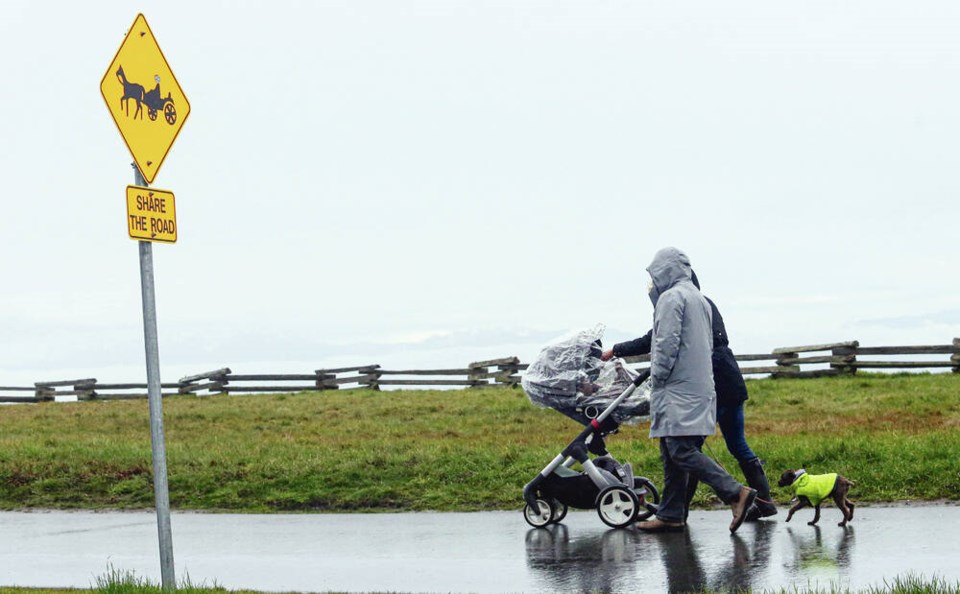VANCOUVER — A University of B.C. expert on PFAS — also known as forever chemicals — has applied to do research on how much of the toxic substances lurk in B.C.’s drinking water.
Exposure to the chemicals, which are widely used in rain gear and non-stick cookware, have been shown to have a wide range of health impacts, including immune suppression, cancer and cardiovascular disease, said Rachel Scholes, an assistant professor in UBC’s department of civil engineering.
She spoke to Postmedia Wednesday following a European study that shows rainwater is unsafe to drink globally because of the persistent levels of PFAS in the atmosphere.
The study, by researchers at Stockholm University and ETH Zurich and published Tuesday in the journal Environmental Science and Technology, says rainwater is unsafe to drink in every area of the world — even in Antarctica and on the Tibetan plateau — because of high amounts of PFAS, formally known as per-and polyfluoroalkyl substances.
PFAS are ubiquitous in consumer products. Canada no longer allows PFAS in personal care products but they are still used in manufacturing.
Scholes has applied for funding and hopes to start her research next year to test B.C.’s drinking water, which she assumes will have some PFAS. Whether there are unsafe levels though is yet to be determined.
She said the Stockholm study highlights just how prevalent these chemicals are in the environment.
“I think one of the big take-aways of this most recent study is just that these compounds are so widely distributed in the environment that we almost certainly would find them [in B.C.’s rainwater].”
Scholes cannot make recommendations for B.C. residents who collect and drink rainwater — “the data just isn’t there.”
Governments are phasing out some PFAS, but Scholes said often one is replaced by another persistent chemical that lingers in the environment.
“They are used so widely that it’s been challenging to stop all use of these compounds,” she said.
“I think the important point is that a couple of the chemicals that have been used the most are starting to be phased out but replaced by other compounds that are likely to have similar effects. And so a lot of scientists are calling for all PFAS to be treated as one class of compounds and regulated together.”
Ian Cousins, the lead author of the European study and professor at Stockholm University, said in a statement there has been an “astounding decline” in guideline values for PFAS in drinking water in the past 20 years.
For example, the drinking water guideline value for one well-known substance in the PFAS class — the cancer-causing perfluorooctanoic acid, or PFOA — has dropped to just one 37.5 millionth of what it once was, he said.
“Based on the latest U.S. guidelines for PFOA in drinking water, rainwater everywhere would be judged unsafe to drink. Although in the industrial world, we don’t often drink rainwater, many people around the world expect it to be safe to drink and it supplies many of our drinking water sources,” he said.
PFAS are known to be highly persistent, but their continued presence in the atmosphere is also due to their properties and natural processes that continually cycle PFAS back to the atmosphere from the surface, the researchers said.
The Stockholm University team conducted laboratory and field work on the atmospheric presence and transport of PFAS for a decade. They noted that the levels of some harmful PFAS in the atmosphere are not declining despite attempts to phase out the chemicals.



